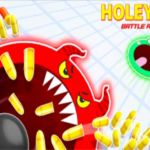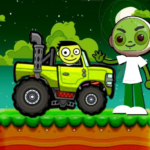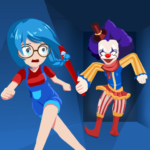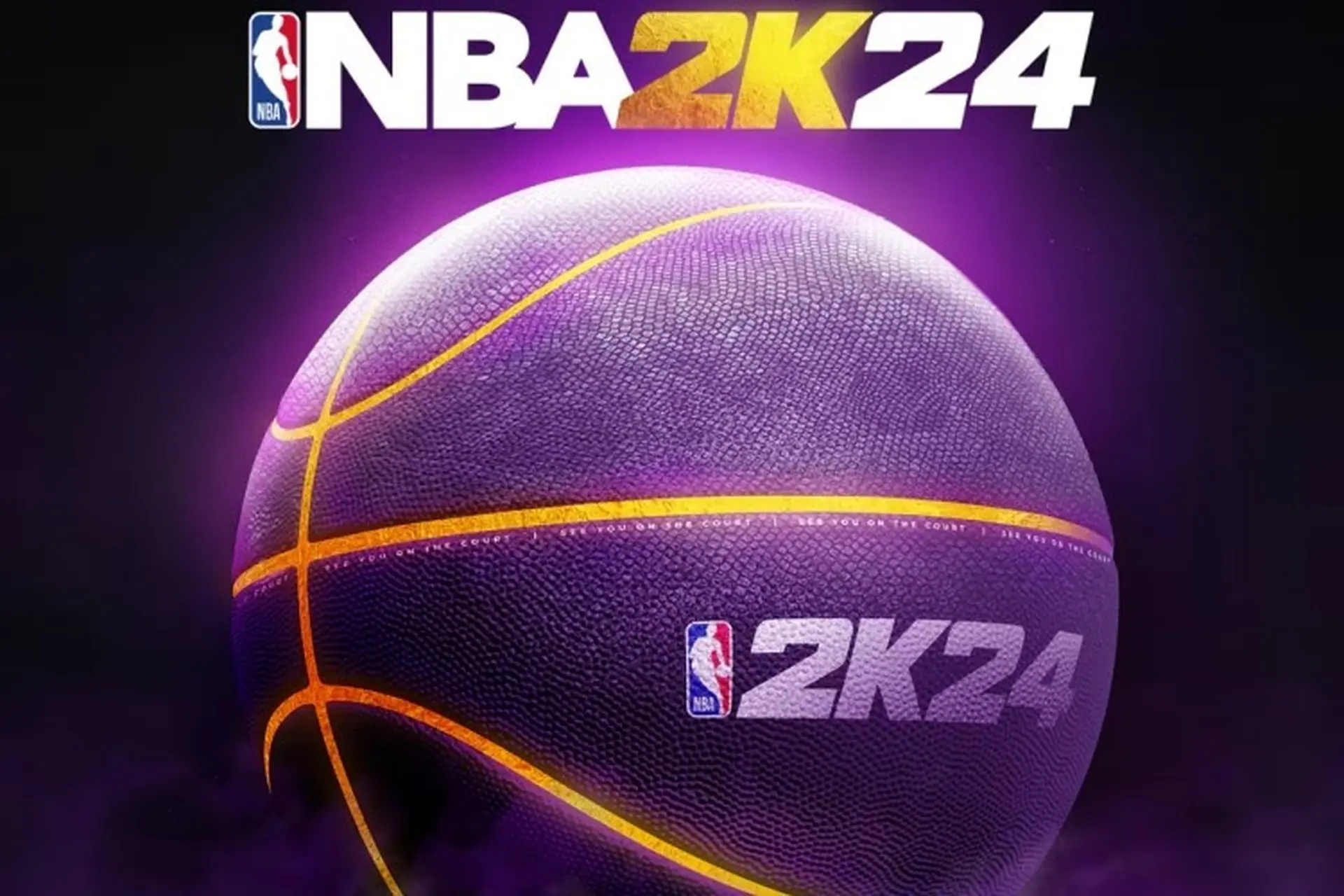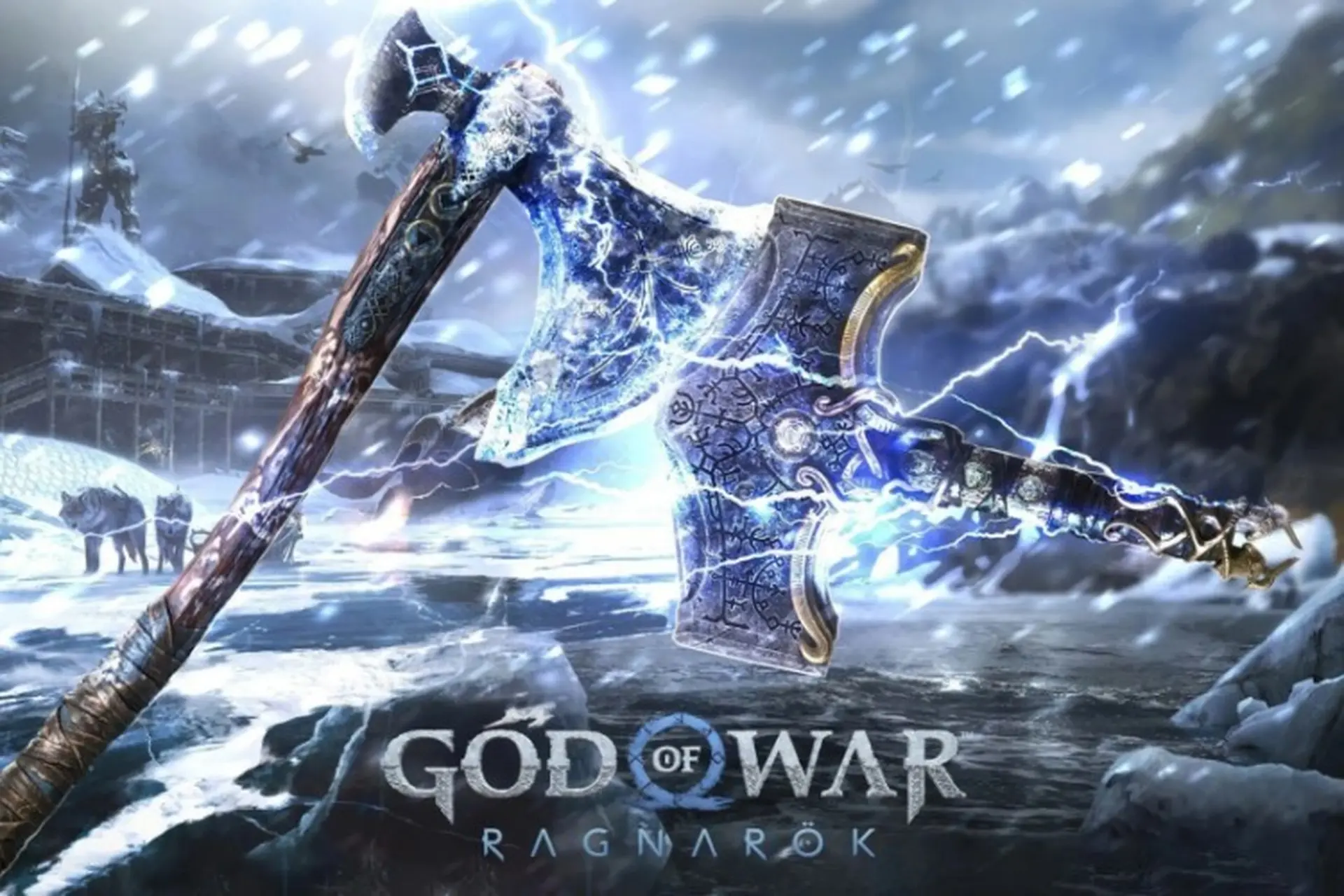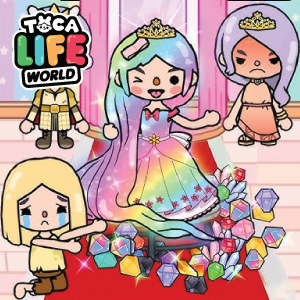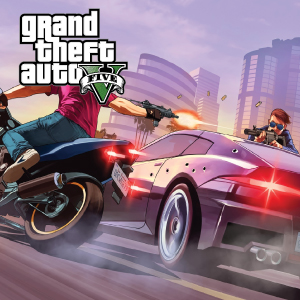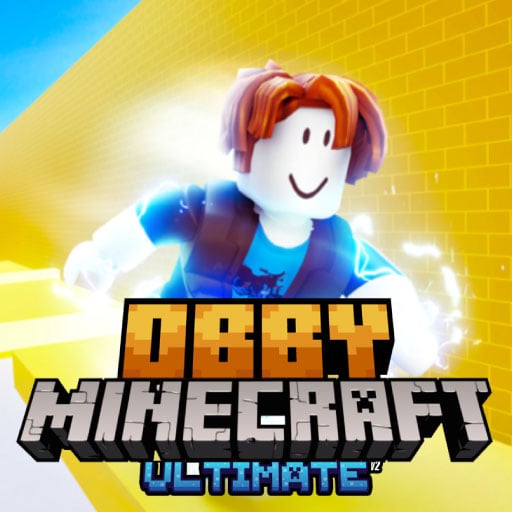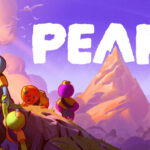Brawl Stars: The Enduring Phenomenon of Supercell's Mobile MOBA
Since its global launch in December 2018, Brawl Stars, developed and published by the Finnish mobile gaming giant Supercell, has carved out a significant niche in the highly competitive mobile gaming landscape. Blending fast-paced MOBA action with the accessibility of a hero shooter, the game has consistently captivated millions with its vibrant cast of characters, diverse game modes, and ever-evolving gameplay. More than just a casual time-killer, Brawl Stars has fostered a thriving competitive scene and a passionate community, demonstrating Supercell's mastery in crafting engaging and sustainable mobile experiences. This article delves into the depths of Brawl Stars, exploring its journey from concept to global sensation, its intricate mechanics, its vibrant ecosystem, and its lasting impact on the mobile gaming world.
The Genesis and Evolution: From Concept to Global Launch (2017-2018)
Brawl Stars' journey began long before its global release, undergoing an extensive soft launch period that saw significant changes and refinements. Supercell, renowned for its highly successful titles like Clash of Clans and Clash Royale, embarked on a mission to create a team-based game tailored specifically for mobile devices, aiming for depth without unnecessary complexity.
Early Development and Soft Launch Challenges
Initially announced via a livestream in June 2017, Brawl Stars first soft-launched in Canada for iOS devices the very next day. This soft launch, lasting a remarkable 522 days, was a period of intense iteration and self-doubt for the developers. The game originally featured a portrait mode orientation and tap-to-move controls, a stark contrast to its current landscape mode and joystick controls. These fundamental changes, alongside UI redesigns and a transition from 2D to 3D graphics, underscore Supercell's commitment to player experience and their willingness to pivot based on feedback. The challenging beta period was largely attributed to the team venturing into a new genre where success metrics were less clear. Throughout this phase, the game expanded its soft launch to several other countries, including Finland, Sweden, and Singapore, gradually refining its core mechanics and appeal.
The Global Release and Initial Impact
The arduous soft launch culminated in the worldwide release of Brawl Stars on December 12, 2018, for both iOS and Android platforms. The game immediately resonated with a global audience, grossing over US$63 million in its first month. This strong initial performance validated Supercell's patient development approach and confirmed the game's potential to become another mobile gaming powerhouse. The success of Brawl Stars was not just in its engaging gameplay but also in its clever adaptation of popular MOBA and hero shooter elements for the on-the-go nature of mobile gaming.
Core Gameplay: Fast-Paced Action and Strategic Depth
At its heart, Brawl Stars offers a compelling blend of real-time 3v3 and battle royale combat, designed for quick, intense matches lasting under three minutes. The accessibility of its controls belies a surprising depth of strategy, making it appealing to both casual players and competitive enthusiasts.
Understanding the Brawlers
The game's diverse roster of "Brawlers" is central to its appeal. Each Brawler possesses a unique main attack, a powerful "Super" ability that charges by dealing damage, and often additional "Gadgets" and "Star Powers" that further customize their playstyle. Brawlers are broadly categorized into roles, influencing team composition and strategic approaches:
- Tanks: High health, designed to absorb damage and initiate fights (e.g., El Primo, Frank, Bull).
- Assassins: High mobility, capable of quickly closing distances and dealing burst damage, but often with lower health (e.g., Leon, Edgar, Crow).
- Damage Dealers: Focus on dishing out high damage with varied ranges (e.g., Shelly, Colt, Nita).
- Support: Provide healing or buffs to teammates, crucial for team survivability (e.g., Poco, Doug).
- Artillery: Can attack over obstacles, specializing in long-range and splash damage but vulnerable up close (e.g., Barley, Dynamike, Tick).
- Controllers: Master area-of-effect attacks to dominate map control and zone enemies (e.g., Jessie, Bo, Charlie).
- Marksmen: Long-range attackers who prefer to engage from a distance (e.g., Piper, Brock, Belle).
The continuous introduction of new Brawlers, each with distinct mechanics, keeps the meta fresh and encourages players to master a variety of characters.
Key Gameplay Mechanics
Brawl Stars simplifies traditional MOBA mechanics for mobile, yet retains strategic elements:
- Movement and Aiming: Players control their Brawler using a virtual joystick for movement and another for aiming attacks. A "quickfire" option allows for automatic targeting of the nearest enemy, useful for fast reactions.
- Ammo System: Most Brawlers have a limited number of ammo slots that reload over time, requiring players to manage their attacks strategically and avoid spamming.
- Super Abilities: Charged by dealing damage, Supers are game-changing abilities that can turn the tide of a fight, from devastating area attacks to defensive buffs or utility plays.
- Bushes and Walls: Environmental elements like bushes provide cover and allow for ambushes, while walls can block attacks, creating tactical choke points and unique map interactions.
- Power Cubes: In Showdown mode, players collect Power Cubes from defeated opponents or crates to increase their health and damage, gradually escalating the power of Brawlers in the match.
Mastering these mechanics, understanding Brawler synergies, and adapting to different map layouts are crucial for success in Brawl Stars.
A Plethora of Game Modes: Variety is the Spice of Brawl
Brawl Stars offers a constantly rotating selection of game modes, each with unique objectives and strategic considerations. This variety prevents monotony and keeps players engaged, catering to different playstyles and preferences.
Core 3v3 Modes
- Gem Grab: Teams compete to collect 10 gems from a central mine and hold them until a countdown expires. Dying causes a player to drop all their collected gems.
- Brawl Ball: A soccer-like mode where teams attempt to score two goals before their opponents. There are no fouls, encouraging aggressive plays and Brawler abilities to clear paths.
- Bounty: A team deathmatch where players earn stars by defeating opponents. The team with the most stars at the end wins, with a central blue star serving as a tiebreaker.
- Heist: One team defends a safe, while the other tries to destroy it within a time limit. This mode emphasizes both offensive and defensive strategies.
- Hot Zone: Teams capture and hold specific areas on the map to gain points. The first team to reach 100 points wins, requiring sustained control and coordinated pushes.
- Knockout: A best-of-three elimination mode where defeated Brawlers remain out until the next round. Poison clouds gradually shrink the map, forcing engagements.
- Wipeout: Similar to Bounty, but focuses purely on defeating opponents to reach a target score, without the added complexity of stars dropping.
Solo and Duo Modes
- Showdown (Solo/Duo): A battle royale mode where 10 players (or 5 duos) fight to be the last Brawler(s) standing. Players collect Power Cubes to strengthen their Brawler and must contend with a shrinking poisonous gas cloud.
Special Events and Rotations
Beyond the core modes, Brawl Stars frequently introduces limited-time special events and rotates maps, ensuring that the gameplay experience remains dynamic. These can include:
- Robo Rumble: Players defend a safe from waves of robots.
- Super City Rampage: A team of three attempts to defeat a giant monster before it destroys the city.
- Boss Fight: One player takes on the role of a powerful boss, while five others try to defeat them.
- Basket Brawl: A basketball-themed mode with unique scoring mechanics.
- Duels: A 1v1 mode where players pick three Brawlers and battle it out, with the victor keeping their Brawler for the next round.
- Payload: Teams push a minecart along a track to a designated goal.
This constant influx of new content, game modes, and map variations significantly contributes to Brawl Stars' long-term player retention.
The Competitive Edge: From Casual Fun to Esports Glory
Brawl Stars has successfully transitioned from a casual mobile game to a legitimate esports title, cultivating a vibrant competitive scene that showcases high-level gameplay and strategic mastery.
Rise of the Championship Challenge
The "Championship Challenge" serves as the in-game qualifier for the broader Brawl Stars esports ecosystem. This recurring event allows skilled players to test their mettle against others, with top performers advancing to higher-tier competitions. It democratizes access to competitive play, allowing any dedicated player to potentially rise through the ranks.
Brawl Stars World Finals
The pinnacle of Brawl Stars esports is the annual "Brawl Stars World Finals." The inaugural event was held in November 2019 in South Korea, boasting a significant prize pool. The 2020 World Finals, while moved online due to global circumstances, still featured a substantial prize pool and drew widespread viewership. These events highlight the strategic depth of the game and the skill of professional players, attracting a dedicated audience and further cementing Brawl Stars' place in the mobile esports arena. The competitive scene continues to evolve, with increasing prize pools and more sophisticated tournament structures.
Community-Driven Competitive Play
Beyond official tournaments, the Brawl Stars community actively engages in competitive play through:
- Clubs: Players form or join clubs to connect with like-minded individuals, team up for ladder pushes, and participate in club-exclusive events like Mega Pig, which reward collective effort.
- Ladder Ranking: A robust trophy system and global/local leaderboards drive competitive spirit, encouraging players to master Brawlers and climb the ranks.
- Content Creators: Many content creators focus on competitive Brawl Stars, providing guides, analysis of meta shifts, and showcasing high-level gameplay, further fueling interest in the esports scene.
The Ever-Evolving Game: Updates, Features, and Monetization
A key factor in Brawl Stars' sustained success is Supercell's commitment to consistent updates, introducing new Brawlers, features, and quality-of-life improvements. This keeps the game fresh and responsive to player feedback.
Regular Content Updates
Supercell regularly rolls out updates that include:
- New Brawlers: The continuous release of new characters, often with unique mechanics and abilities, ensures the game's meta remains dynamic and offers new challenges for players to master. For instance, the July 2025 update introduced Alli (Mythic) and Trunk (Epic), alongside a full Trophy Road rework.
- New Game Modes and Maps: As discussed, the rotation of existing modes and introduction of entirely new ones keeps the gameplay diverse. Player-designed maps, a popular community feature, also contribute to this variety.
- Skins and Cosmetics: A vast array of cosmetic skins allows players to personalize their favorite Brawlers, often tied to seasonal themes or collaborations. These are a significant part of the game's monetization.
Feature Enhancements and QoL Changes
Supercell is responsive to community feedback, often implementing changes to improve the player experience:
- Trophy Road Reworks: Periodically, the progression system is refined to offer better rewards and a more satisfying journey for new and veteran players alike. The recent July 2025 update featured a full Trophy Road rework to improve new player tutorials and rewards.
- Mastery System and Records: While the Mastery system for Brawlers was adjusted, a new "Records" achievement system was introduced to allow veteran players to showcase their skills and earn rewards. Supercell continues to refine this system based on community input.
- Balance Changes: Regular balance patches ensure that no single Brawler or strategy dominates the meta for too long, promoting a diverse and competitive environment.
- Monetization Model Evolution: Brawl Stars' monetization primarily revolves around the "Brawl Pass," a seasonal progression system that offers both free and paid tiers of rewards (Gems, Coins, Power Points, Pins, exclusive skins). While there have been discussions and adjustments to the economy, such as changes to Mastery rewards and the introduction of "Starr Drops" (randomized rewards), Supercell strives to balance free-to-play progression with incentives for in-app purchases. The move away from IAP early access Brawlers, as announced for August 2025 with Trunk being the last, indicates a shift towards more free-to-play friendly options for early Brawler access.
Addressing Community Feedback
Supercell actively engages with its community through social media, developer blogs, and in-game surveys. This direct communication allows them to gather feedback and address player concerns, fostering a sense of ownership and loyalty among the player base. Recent discussions around monetization and progression systems demonstrate this ongoing dialogue.
Community and Engagement: The Heart of Brawl Stars
Beyond the game itself, the vibrant and active community is a cornerstone of Brawl Stars' success. Supercell fosters this engagement through various initiatives and encourages player interaction.
Social Features and Clubs
The in-game club system is a primary hub for social interaction. Players can:
- Form or Join Clubs: Connect with friends or find new teammates, creating a sense of camaraderie.
- Participate in Club Events: Events like "Mega Pig" encourage collective effort, rewarding clubs for achieving shared goals.
- Share Strategies and Tips: Clubs often become platforms for discussing Brawler builds, map strategies, and meta trends.
Content Creation and Social Media
The Brawl Stars community thrives on platforms like YouTube, Twitch, Reddit, and Discord.
- Popular Content Creators: Numerous YouTubers and streamers dedicate their channels to Brawl Stars, producing gameplay videos, Brawler guides, patch analysis, and entertaining content, significantly contributing to the game's visibility and growth.
- Fan Art and Discussions: Players actively share fan art, memes, and engage in lively discussions on dedicated subreddits and Discord servers, demonstrating their passion for the game.
- Developer Interaction: Supercell developers frequently engage with the community on social media, providing updates, responding to feedback, and even participating in community events, strengthening the bond between players and the development team.
In-Game Events and Challenges
Supercell regularly hosts in-game events and challenges that encourage community participation:
- Challenges with Unique Modifiers: These often require specific Brawlers or team compositions, promoting experimentation and teamwork.
- Community Milestones: Sometimes, global in-game challenges are set, where players collectively work towards a goal for shared rewards, fostering a sense of unity.
This strong community engagement ensures that Brawl Stars remains a dynamic and interactive experience beyond just the core gameplay loop.
Monetization and Business Model: Sustaining a Free-to-Play Title
Brawl Stars, like many mobile games from Supercell, operates on a free-to-play model, generating revenue primarily through in-app purchases. The goal is to provide a compelling experience for all players while offering optional purchases for acceleration and cosmetic customization.
The Brawl Pass
The "Brawl Pass" is the cornerstone of Brawl Stars' monetization. It's a seasonal battle pass that offers two tiers:
- Free Pass: Provides a steady stream of rewards, including Coins, Power Points, and Gems, simply by playing and completing quests. This ensures free-to-play players can still progress and unlock new content.
- Paid Pass (Brawl Pass Plus): For a premium, players unlock an enhanced reward track with significantly more resources, exclusive skins, pins, and often early access to new Brawlers. This offers accelerated progression and cosmetic benefits.
Other Monetization Avenues
- Gem Purchases: Gems are the premium currency, used to buy Brawlers directly, purchase skins, acquire exclusive offers, or speed up progression.
- Skins and Cosmetics: A significant portion of revenue comes from the sale of Brawler skins, pins (emotes), and other cosmetic items that allow players to personalize their in-game experience.
- Offers and Bundles: Limited-time offers for Brawlers, resources, and cosmetics are regularly featured in the shop, encouraging impulse purchases.
Supercell aims for a balanced approach, ensuring that even free-to-play players can enjoy and progress in the game, while offering compelling value propositions for those who choose to spend. The ongoing adjustments to the monetization model, such as the recent changes to Mastery rewards and the shift in early Brawler access, reflect their efforts to maintain this balance and respond to player sentiment.
The Future of Brawl Stars: Predictions and Prospects
As Brawl Stars moves further into its lifecycle, the question of its future evolution naturally arises. Based on Supercell's past trends and current announcements, several predictions can be made regarding the game's direction.
Continued Content Expansion
- New Brawlers: Expect a steady release of new Brawlers, potentially with even more complex and multi-stage Supers, and perhaps even a new Brawler class that introduces novel mechanics like advanced map control or support roles.
- More Game Modes: Supercell will likely continue to experiment with new game modes, focusing on those that encourage strategic team play and unique objectives. Overhauls of existing less popular modes are also probable.
- Evolving Skins: The quality and intricacy of skins are expected to increase, potentially including dynamic effects, unique voice lines, and even appearances that change based on in-game actions. More collaborations with other franchises or artists are also a strong possibility.
System Refinements and Quality of Life
- Trophy Road and Progression: Ongoing refinement of the Trophy Road and other progression systems, like the "Records" achievements, to ensure a smoother and more rewarding experience for all player types.
- Balance Changes: Frequent balance adjustments will remain crucial to maintaining a healthy and diverse meta.
- Matchmaking and Anti-Cheat: Continued improvements to matchmaking algorithms for fairer matches and enhanced anti-cheat measures to ensure a level playing field.
- Community-Driven Features: Supercell is likely to continue empowering the community, perhaps with further developments in the map maker or more avenues for player-designed content.
Strategic Direction and Monetization
- Player-First Approach: While monetization is essential, Supercell has demonstrated a commitment to long-term player satisfaction. Future monetization strategies will likely focus on providing compelling value while ensuring accessibility for free-to-play players, as evidenced by the changes to early Brawler access.
- Esports Growth: The competitive scene is expected to grow, with increased prize pools, more structured tournaments, and greater integration of esports elements within the game.
The future of Brawl Stars appears bright, with a clear path for continued innovation, community engagement, and a commitment to maintaining its position as a leading mobile MOBA.
Conclusion: A Mobile Gaming Triumph
Brawl Stars stands as a testament to Supercell's ability to craft compelling and enduring mobile games. Its success is not merely a product of addictive gameplay but a result of a meticulous development process, a commitment to consistent content updates, a responsive approach to community feedback, and a well-designed monetization strategy that balances accessibility with premium offerings.
From its challenging soft launch to its global phenomenon status and burgeoning esports scene, Brawl Stars has demonstrated its capacity for growth and adaptation. Its vibrant cast of Brawlers, diverse game modes, and fast-paced action provide endless hours of entertainment for millions worldwide. As mobile gaming continues to evolve, Brawl Stars remains a shining example of how a mobile title can achieve both widespread casual appeal and deep competitive engagement, cementing its legacy as a true triumph in the realm of mobile MOBA.














